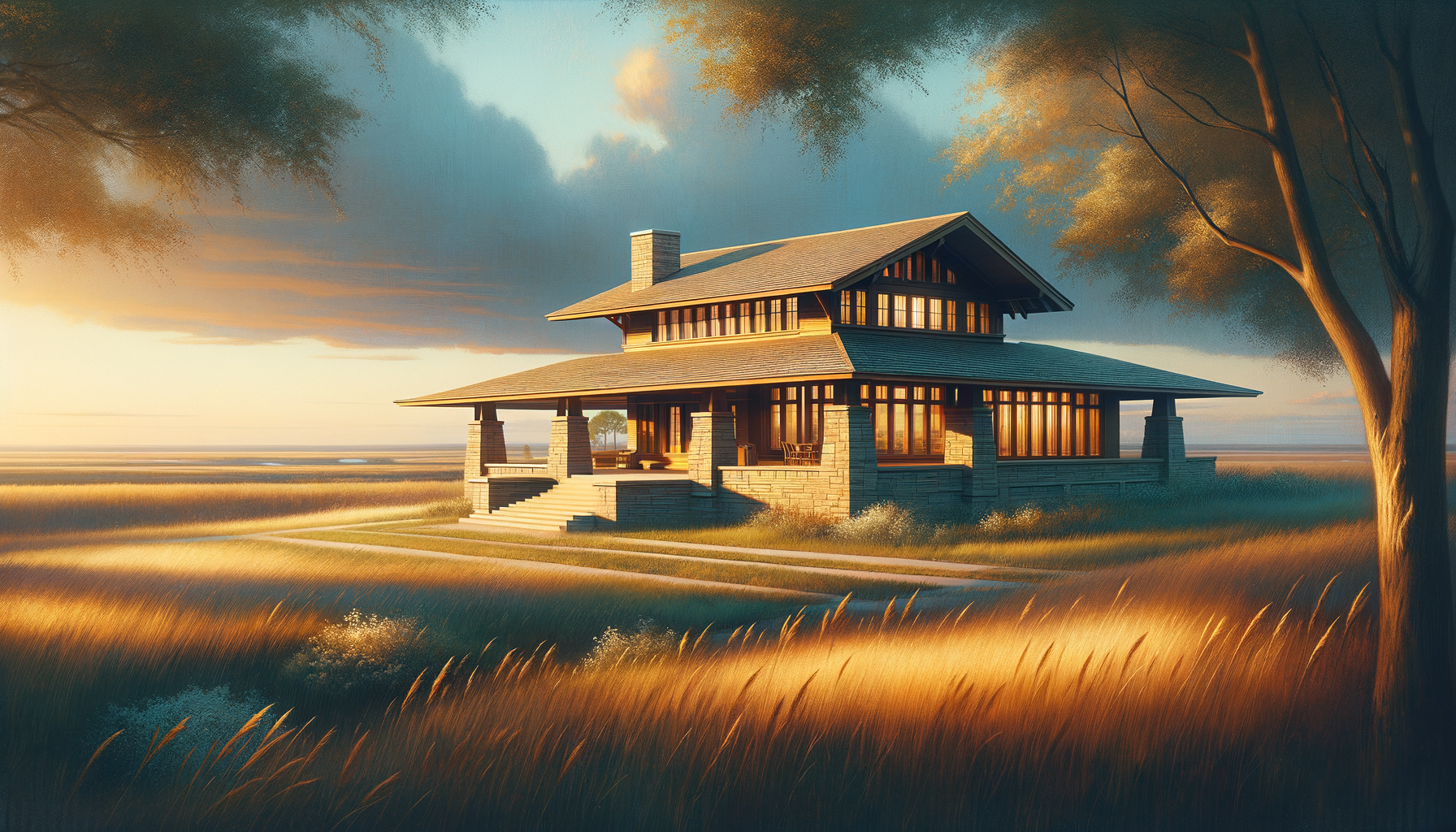“Exploring the Timeless Elegance of Prairie House Style: A Nod to America’s Landscape”

Casting a glance at the heartland of America, one can’t help but notice the vast open prairies that stretch as far as the eye can see. These prairies, with their rich, fertile soil and sweeping vistas, have inspired not only classic works of literature but also a significant architectural movement. Indeed, the Prairie School of architecture, a classic, uniquely American style, reflects the expanses of our native landscape.
Unveiling the Prairie House Style
The name “Prairie-style” was born from an architectural design that mirrors the wide flat landscapes synonymous with the Midwest. Originating in the late 19th and early 20th centuries, this style was steeped in the arts and crafts movement that championed handcrafted artisanship over mass-produced, industrial design.
The Prairie style of architecture was largely pioneered by Frank Lloyd Wright, one of America’s most iconic architects. Wright envisioned a unique, organic approach to residential architectural design that embodied a connection to the natural surroundings. The aim was to create homes that are not just buildings in a landscape but rather a part of the landscape itself.
Key Features of Prairie House Style
A Prairie-style home presents a low-profile exterior, with strong horizontal lines mimicking the flat prairie landscape, low-pitched roofs, and broad, overhanging eaves. They give an impression of being built into the landscape, rather than upon it. Built-in furniture, open floor plans, and rows of small windows, often art glass or leaded glass, are found in these homes. The windows are typically arranged in horizontal bands, giving the building a further sense of expansiveness. The design approach is summed up in one phrase – “form follows function.”
Wright’s Prairie-style houses reflect an aesthetic sense of simplicity, honesty in construction, and harmony with nature. Such homes are typically constructed of natural materials like wood and stone, often with significant use of glass to blur the line between indoor and outdoor space.
Living in a Prairie House
Today, many homeowners value Prairie-style homes for the same reasons that Wright originally proposed them. Their simple, functional style speaks to a desire for low-impact living, where the house connects with its environment rather than dominating it.
Inside a Prairie-style house, you’ll discover open floor plans that allow for a free flow of movement and light. Natural materials are used throughout, providing a warm and inviting atmosphere. Built-in furniture reduces clutter, promotes efficient use of space, and enhances the overall aesthetic appeal.
Prairie houses, with their extensive use of glass, not only provide visually pleasing aesthetics but also make the most of natural light. Designing these homes with a low horizontal profile and a central chimney ensures heat is distributed evenly.
Final Note
The Prairie house style is an influential architectural movement that reflects the spirit and landscapes of America’s heartland. Guided by principles of organic architecture, the style is characterized by its emphasis on craftsmanship, simple form, and harmony with nature.
However, owning a Prairie-style home comes with responsibilities. Maintenance and preservation are key considerations as these homes age. While some homeowners may undertake significant renovations, it’s strongly advised to preserve the original design’s integrity.
In short, the Prairie house offers a way of living that promotes harmony, efficiency, and a sense of connection with the landscape. Its enduring popularity is a testament to the timelessness of their design and their profound resonance with the American spirit. It’s more than just a style – it’s a lifestyle choice. Similarly, more than just a structure, a Prairie-style home is an architectural canvas that embraces and reflects the nature around it.
Whether you’re undertaking a renovation, considering a new build, or just have a love for unique architectural styles, the Prairie house style should unquestionably be on your list. It’s a timeless tribute to nature, functional design, and the simple, satisfying beauty of our American prairies.
